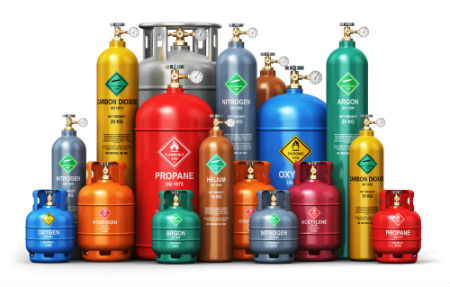
This blog is going to be slightly different from the others. We’re going to talk about a weld process variable as the primary consideration and work backwards into effects on the work piece. Rather than what directly affects you, I’d like to talk about what challenges us, the welders.
Today’s topic is shield gas.
What is it? It is an integral part of most atmospheric weld processes (laser welding, TIG, MIG, plasma arc). It is used to displace the reactive gasses found in the air we breathe. Oxygen, nitrogen, and carbon dioxide, to name a few.
Why does it matter? If the welded material is reactive with those gasses, it can be quite catastrophic to the quality of the part. Our cars and kitchen appliances are painted for the same reasons. Nobody wants a car or can opener that rusts when just sitting around. Likewise, nobody wants a weld that is mostly oxidized (rusted) metal.
When does it matter? Good question. Thanks for asking. It doesn’t always matter. Some metals are somewhat self-shielding or not readily prone to reacting with air. These metals don’t demand protection. Gold is quite resistant to oxidation. Stainless steel, while not immune, does have characteristics that allow for welding without an inert environment under certain circumstances. Titanium is VERY sensitive to environment and extra precautions need to be considered when welding this touchy metal. (Titanium does weld quite nicely otherwise.)
What kind of gasses are used? Another good question. The most common industrial gas is argon, since it is very stable and virtually non-reactive even at elevated temperatures. It is typically distilled from the atmosphere. Helium is also used frequently. Nitrogen is effective for use on certain metals. Even carbon dioxide, which can be reactive, is a good candidate under certain circumstances. In theory, any of the noble gasses ought to be effective at displacing reactive gasses. In reality, you won’t find too many welding houses running to their local neon supplier for shielding gas, though.
Why does this matter to me? Ah, now to the selfish heart of the matter. The simple answer: Money. Gas costs money to purchase, to store, to control, and to deliver to the work piece. Also, a cubic foot of helium is much more expensive than a cubic foot of nitrogen, which in turn is much more expensive than using no gas at all. If you have a high-volume welding job, choosing the right gas or no gas can have a notable effect on your part price.
How do I know which gas to choose? Here it is: Talk to your welding experts. They will have the experience required to help you decide which gas is right for your project.









